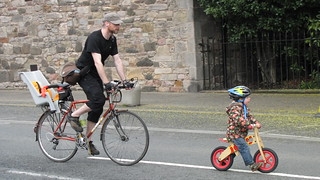Saw this on Facebook:-
The Forth Road Bridge
To those who are saying "why was this problem not picked up during inspections", let me offer you this:
The part that has failed is called a "truss end link" There are 8 of them (I think) on the bridge, two at each end of each main carriageway deck (the long span in the middle) where they join the main tower. they don't really hold the deck up (that's what those great big cables are for!) but they locat the decks against the towers to make sure they are straight and level.
In February 2009, a report was presented to the Forth Bridge Board saying that the truss end links were showing signs of being overstressed. At that time, they decided to defer the works until after they had carried out the repairs and dehumidification of the main cables. That's fair enough.
They expected to start the work on the truss end links in 2010/11, and even put a notice out inviting tenders for the work in 2010. The tender process was then cancelled.
Then in 2013, the Board were told that the truss end links were one of three projects to be tendered in 2013/14. That was again deferred in early 2014 because of Government funding cuts. At that time, the Board were to,d that deferral of these projects would increase the risk to the long term structural integrity of the bridge and when the works are eventually carried out, the cost will be greater than if they were caught in time.
Never was the phrase "A stitch in time" more appropriate.
They also estimate that apart from the works themselves (which was less than 3 million for all 3 projects at that time, but what they have now is a very difficult repair), this closure is likely to cost the Scottish economy 50 million.
Now I am obviously biased because I am an engineer not a politician, but does anybody now still think those "budget cuts" were a worthwhile saving?
But who do they go to when it all goes wrong? That will be the engineers again, to come up with a transport plan, to make alternative routes work, and to look at alternative transport modes.
But there's a problem. I was involved in intensive destination surveys at the bridge 20 years ago, and at that time, we found that half of the people travelling to Edinburgh city centre, already travelled by train. We also found (contrary to the view of the councils) that only about a third of the traffic (I think it was even less than that but my memory is failing!) on the bridge at that time was going into central Edinburgh. A huge proportion was going to West Lothian, Glasgow, Lanarkshire etc, or around Edinburgh to get to Midlothian, East Lothian and the borders etc.
So more trains help, but they do not get more than about a third of the traffic to where they want to be.
So no matter how many more trains, hovercrafts, ferries, water-ski boats, coracles etc you provide between Fife and Edinburgh, you will still have most of the traffic still crossing at Kincardine, because they need the car to complete the onward journey.
And freight. How do you get those goods across (and the answer isn't "trains" because again, they are going all over the place, not just to central Edinburgh). That'll be Kincardine again, then.
So the engineers are left to make the most of this. I'm not involved, so it's nothing to do with me, but don't blame the guys that sort these messes out. Look above under "budget cuts".
https://www.facebook.com/AndrewCarrieTrafficAndTransportation/posts/937205549681615

 posts
posts
